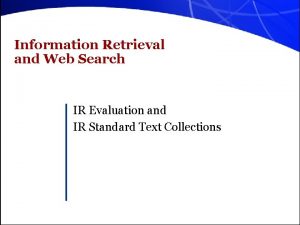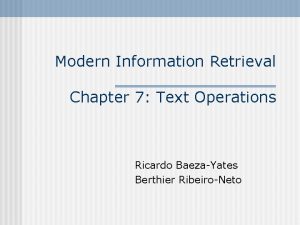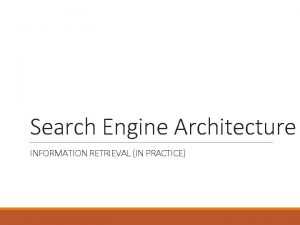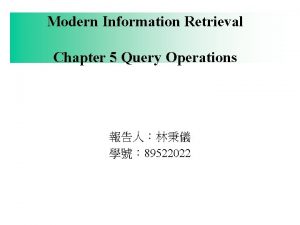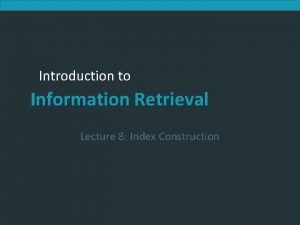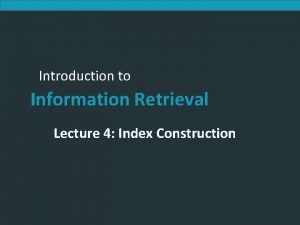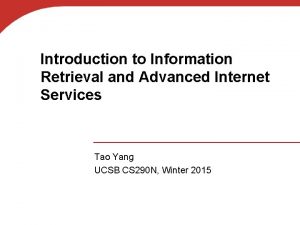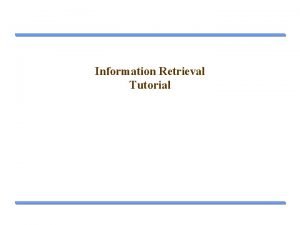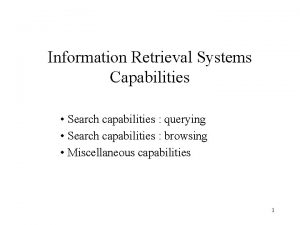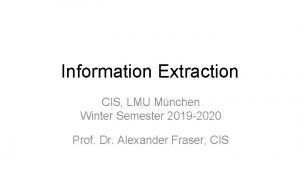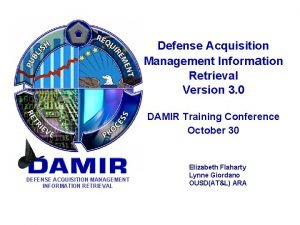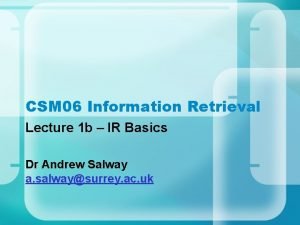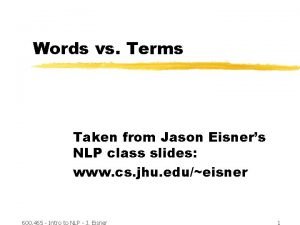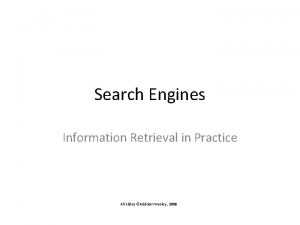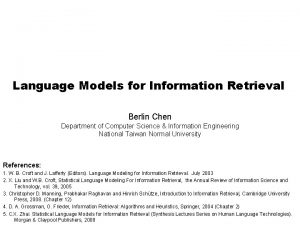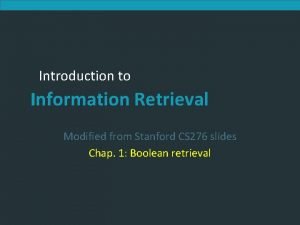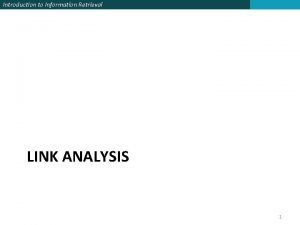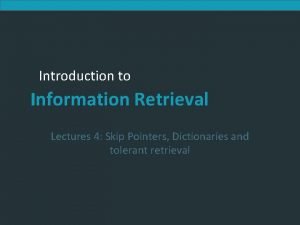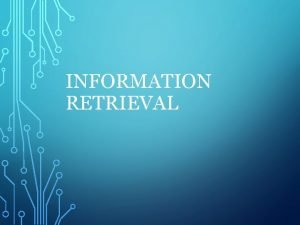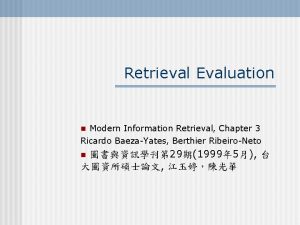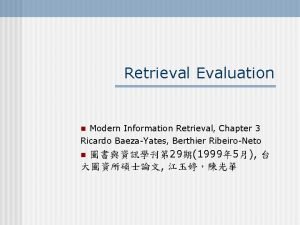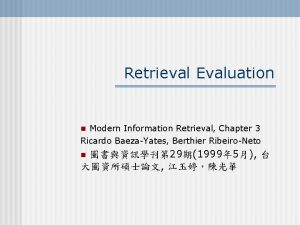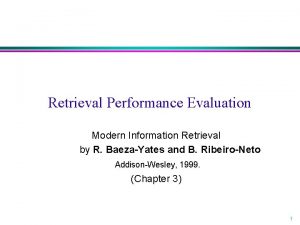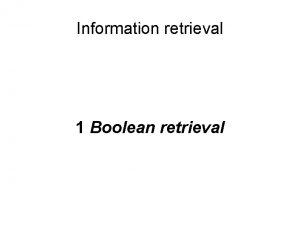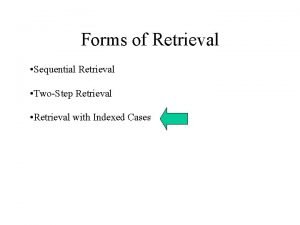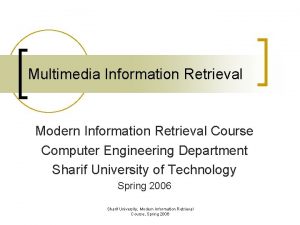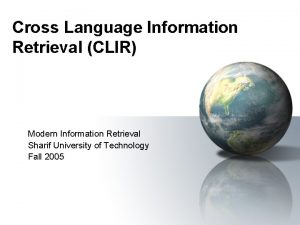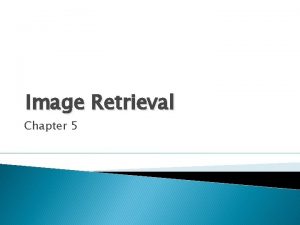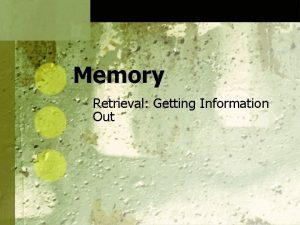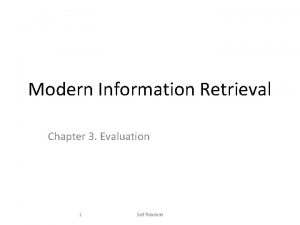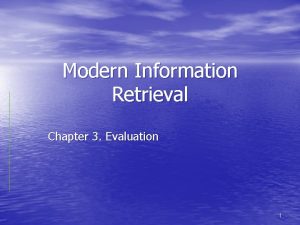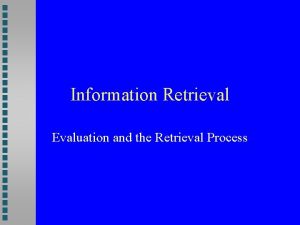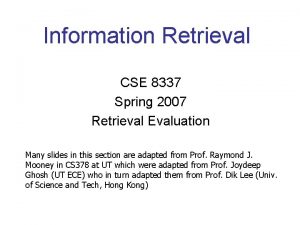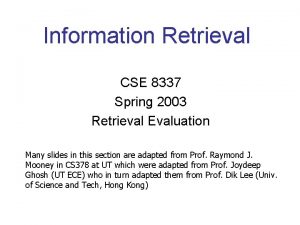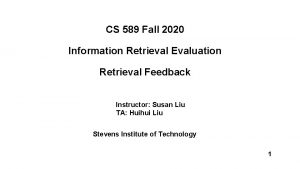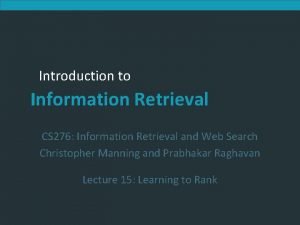Modern Information Retrieval Chapter 3 Retrieval Evaluation The
























- Slides: 24

Modern Information Retrieval Chapter 3 Retrieval Evaluation

The most common measures of system performance are time and space n an inherent tradeoff Data retrieval n n time and space indexing Information retrieval n precision of the answer set also important

n

n evaluation considerations w query with/without feedback w query interface design w real data/synthetic data w real life/laboratory environment n repeatability and scalability

n recall and precision w recall: fraction of relevant documents which has been retrieved w precision: fraction of retrieved documents which is relevant

w can we precisely compute precisions? can we precisely compute recalls?

n precision versus recall curve: a standard evaluation strategy w w

w

w interpolation procedure for generating the 11 standard recall levels n Rq={d 3, d 56, d 129} n where j is in {0, 1, 2, …, 10} and P(r) is a known precision

n

w to evaluate the retrieval strategy over all test queries, the precisions at each recall level are averaged w

w another approach: compute average precision at given relevant document cutoff values n advantages?

n single value summary for each query w average precision at seen relevant documents n n example in Figure 3. 2 favor systems which retrieve relevant documents quickly n can have a poor overall recall performance w R-precision n n R: total number of relevant documents examples in Figures 3. 2 and 3. 3

w precision histogram n n

n combining recall and precision w the harmonic mean n n it assumes a high value only when both recall and precision are high

w the E measure n n b=1, complement of the harmonic mean b>1, the user is more interested in precision b<1, the user is more interested in recall

n user-oriented measures w

w coverage ratio: fraction of the documents known to be relevant which has been retrieved n n the system finds the relevant documents the user expected to see

w novelty ratio: fraction of the relevant documents retrieved which was previously unknown to the user n n the system reveals new relevant documents previously unknown to the user

w relative recall: the ratio between the number of relevant documents found and the number of relevant documents the user expected to find n n relative recall= when the relative recall equals to 1 (the user finds enough relevant documents), the user stops searching

w recall effort: the ratio between the number of relevant documents the user expected to find and the number of documents examined in an attempt to find the expected relevant documents n research in IR w lack a solid formal framework w lack robust and consistent testbeds and benchmarks n Text REtrieval Conference

n n n retrieval techniques n methods using automatic thesauri n sophisticated term weighting n natural language techniques n relevance feedback n advanced pattern matching document collection n over 1 million documents n newspaper, patents, etc. topics n in natural language n conversion done by the system

n n relevant documents n the pooling method: for each topic, collect the top k documents generated by each participating system and decide their relevance by human assessors the benchmark tasks n ad hoc task n filtering task n Chinese n cross languages n spoken document retrieval n high precision n very large collection

n evaluation measures n summary table statistics: number of documents retrieved, number of relevant documents not retrieved, etc. n recall-precision averages n document level averages: average precision at seen relevant documents n average precision histogram
 Information retrieval evaluation
Information retrieval evaluation Information retrieval evaluation
Information retrieval evaluation Modern information retrieval
Modern information retrieval Modern information retrieval
Modern information retrieval What is sequential search
What is sequential search Search engine architecture
Search engine architecture Query operations in information retrieval
Query operations in information retrieval Skip pointers
Skip pointers Index construction in information retrieval
Index construction in information retrieval Spimi
Spimi Which internet service is used for information retrieval
Which internet service is used for information retrieval Information retrieval tutorial
Information retrieval tutorial Wildcard query in information retrieval
Wildcard query in information retrieval Capabilities of information retrieval system
Capabilities of information retrieval system Link analysis in information retrieval
Link analysis in information retrieval Information retrieval lmu
Information retrieval lmu Defense acquisition management information retrieval
Defense acquisition management information retrieval Advantages of information retrieval system
Advantages of information retrieval system Information retrieval nlp
Information retrieval nlp Information retrieval data structures and algorithms
Information retrieval data structures and algorithms Search engines information retrieval in practice
Search engines information retrieval in practice Relevance information retrieval
Relevance information retrieval Stanford information retrieval
Stanford information retrieval Link analysis in information retrieval
Link analysis in information retrieval Skip pointers
Skip pointers

